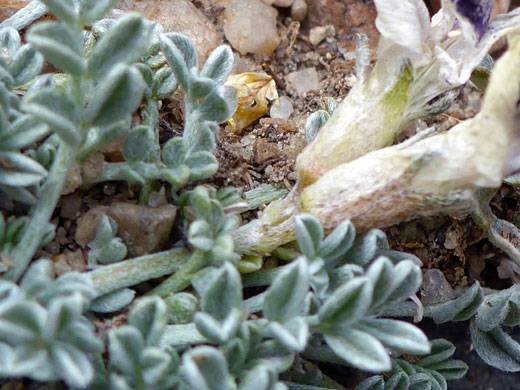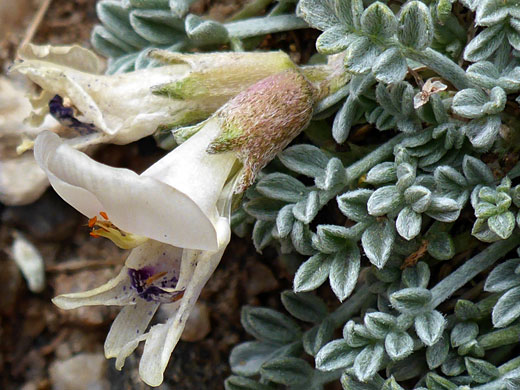Astragalus Platytropis, Broad-keeled Milkvetch
Plants > Wildflowers > Fabaceae > Astragalus Platytropis
Common name:
Broad-keeled milkvetch
Family:
Scientific name:
Astragalus platytropis
Main flower color:
Range:
Nevada, small adjacent parts of neighboring states (except Arizona), and west Montana
Height:
Stems up to 15 inches long - grow close to the ground
Habitat:
Rocky places, near or above the timberline, from 6,000 to 12,000 feet
Leaves:
Up to 3.5 inches long, pinnately divided into between 5 and 14 obovate, blunt-tipped leaflets
Season:
June to August
Astragalus platytropis is most readily identified by its pods, which are inflated, bladder-like, mottled brown in color, and relatively large, up to 1.3 inches long. This species is found in mountainous areas of Nevada, and adjoining parts of Utah, California and Oregon, with another population in the northern Rocky Mountains, Idaho and Montana.
Plants are low growing and quite densely clustered, typically producing several stems. Stems, leaves and calyces are densely covered by silvery-grey hairs. Leaflets are closely-spaced, relatively thick, and are usually slightly folded up along the midvein. Leaflets are small compared to the fruits (and flowers); at most 0.4 inches in length.
Flowers are produced in small clusters; they have a hairy calyx, with teeth much shorter than the tube, and yellow to pale purple petals, lighter when withered. The base of the keel petal is darker purple. The banner petal is recurved by around 45 degrees. Wing petals may be slightly notched at the tip. Calyx hairs are a mixture of dark and light.
Plants are low growing and quite densely clustered, typically producing several stems. Stems, leaves and calyces are densely covered by silvery-grey hairs. Leaflets are closely-spaced, relatively thick, and are usually slightly folded up along the midvein. Leaflets are small compared to the fruits (and flowers); at most 0.4 inches in length.
Flowers are produced in small clusters; they have a hairy calyx, with teeth much shorter than the tube, and yellow to pale purple petals, lighter when withered. The base of the keel petal is darker purple. The banner petal is recurved by around 45 degrees. Wing petals may be slightly notched at the tip. Calyx hairs are a mixture of dark and light.
All Contents © Copyright The American Southwest | Comments and Questions | Contribute | Site Map



